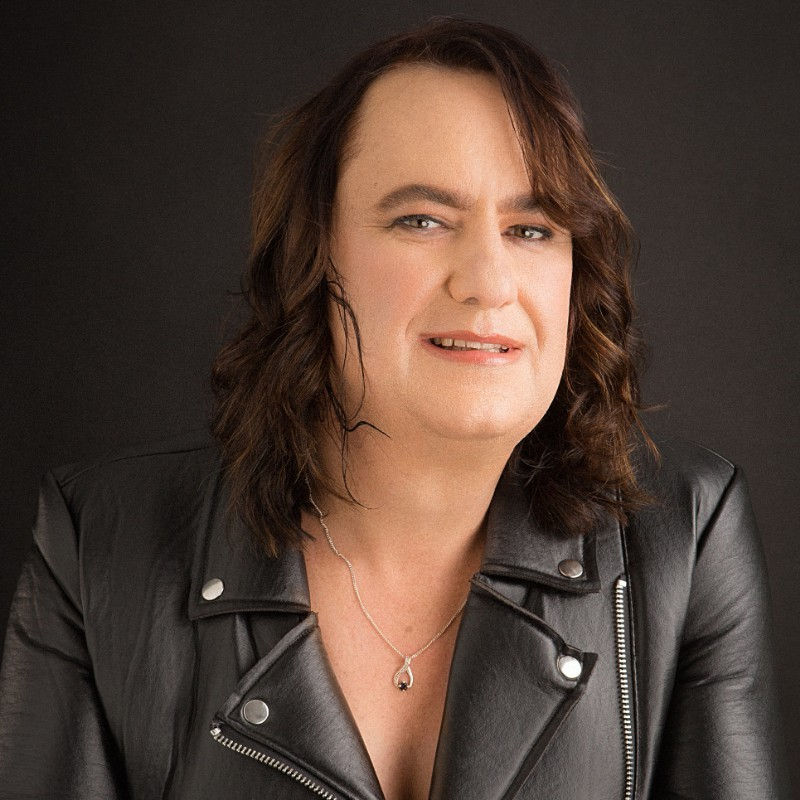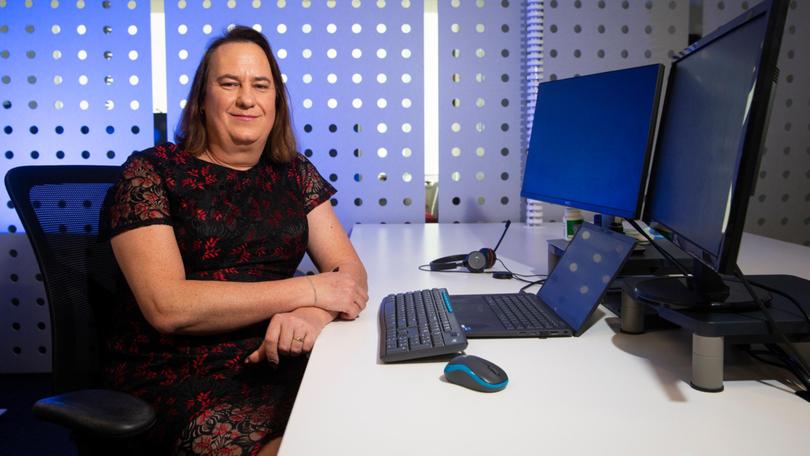
Our Head of Diversity, Culture and Inclusion, Angelina Pillai has been catching up with several of our Member Organisations recently to find out how they are addressing and celebrating diversity and equity in their respective professions. In this segment, Ange sits down with Jeanene Williams, Co-Chair of the Australian Computer Society’s (ACS) National Diversity and Inclusion Council for an insightful and empowering conversation.
What does equity mean to you?
Equity means providing people with the help and assistance they need to be able to compete equally within the workforce. That, for difference people, will mean different things and different levels of support, where some will need more support than others.
So, equity is really about making sure that everybody ends up being able to compete equally in the long run.
How are issues of gender, First Nations’ relationships and neurodiversity celebrated/addressed in your professions, through your professional association?
Gender diversity
The Information Technology (IT) industry is not the most diverse. It’s just reached 31% of women in IT, with the last year experiencing the biggest growth from 29%.
In 2018, the studies by WorkSafe on Sexual Harassment showed that the Information and Media industry (grouped together) had the worst case of sexual harassment of any industry, with about 81% of people being affected, twice as much as the mining industry. Whilst the study is slightly dated, it does give an indication of why these issues within the industry are not attracting women.
In analysing the 31% of women in IT statistic, that percentage is significantly lower for women in leadership positions in IT. Most of the women in IT are in administrative areas. This is rather surprising given that IT is considered a creative industry, and there is strong acknowledgement that the better the diversity the better the creativity, but getting traction has been very slow.
First Nations and Reconciliation
There is even less focus on First Nations, with only 0.06% of Aboriginal representation across the industry, which is significantly smaller that the Aboriginal population.
Neurodiversity
Neurodiverse IT professionals are very under-represented in the industry, but this is improving. They are seen to be very capable in the technical areas, however they are still underrepresented in comparison with the neurodiverse population.
Another area that is underrepresented is the LGBTQA+, although not as bad as the other areas when taken into account across the general population distribution.
The IT industry is a very slow industry to make change in. In Australia, most of the investment and management of the industry is skewed to the older generation of professionals which is contributing to the lack of willingness to make change.
In the ACS elected membership cohort, the average age distribution is such where the highest grouping is 50 – 70 years old. It is also very male dominated, with less than 25% women for the ACS elected members’ group. This is in part because the younger professionals are concentrating on their career progression and aren’t necessarily stepping forward or encouraged to apply for positions. So, this permeates the culture of change resistance.

When people of diversity achieve things, they need to be celebrated, promoted and recognised outside their diversity (ie: not because they are women, or neurodiverse). So, it’s about normalising diversity, otherwise it creates a stigma in itself where the perception could be that they got promoted just because they are a woman, or neurodiverse because the risk is that it could backfire.
Jeanene Williams
In your view, what is the obligation of professionals to improve/support the following across professional landscapes and the professions in general? How do/can they do this?
There are a number of initiatives that can be implemented in attracting girls in school to consider STEM professions. At the ACS, the WA Branch Manager goes out to schools to present and showcase the IT profession and bring awareness of it.
For girls wanting to get into the profession, there is a lack of women role models. It’s easier for girls to be attracted to the profession if they can see somebody that they aspire to. However, that’s the missing piece. There are not enough of these role models to go around. Those that are in leadership positions are very few and far between, very sought after and very stretched.
Organisations such as Women in Technology do quite a bit in this area, such as Awards, however there needs to be more follow up and visibility with recipients of those Awards to be given more opportunity so they are visible and promoted to leadership positions, instead of recruiting the few that are already in those high positions.
This is where professional associations have a very strong role to play in promoting that visibility of diverse groups, not because they are diverse, but for their amazing achievements instead. It’s not just about the visibility of the professional associations themselves, but showcasing that these are the people, diverse people, from these organisations that are making impact. And ultimately, these are the organisations that people would want to work for. Organisations that employ and celebrate all forms of diversity, not just in the gender space, are organisations of choice.
In terms of the obligation of professionals, the Code of Conduct is a good mechanism and has a good role to play to hold professionals accountable. The IT industry has faced some damage to the reputation of the industry in recent times, for example with data breaches and Robodebt; and this makes it less attractive for people to join the industry. From experience, it appears to be more prevalent with women who are not willing to enter an industry which isn’t socially responsible.
There’s a sense that organisations are more focussed on people who are in the organisation or those who are about to come in; and less focused on those who may want to come in. For example, IT is experiencing people coming into the industry from other professions, not necessarily new and younger entrants, so it needs to broaden that appeal.
ACS is updating its Code of Conduct and making it more visible and accountable, so members are aware what’s acceptable conduct.
So, the main obligation is for professionals to uphold the reputation of the industry.
Another obligation is to recognise the figures. ACS publishes an annual Digital Pulse, a snapshot of the industry which includes diversity figures, from ABS statistics and surveys, and tracks the diversity of the industry (such as gender, disability and First Nations representation). However, it can afford to be more granular which is what is being worked on.
All professions should be tracking the diversity and then highlighting the outcomes and promoting role models together with promoting talent (women and people of diversity) from within.
A key to these results of the tracking is to actually celebrate progress however small, instead of dwelling on the lack of progress. This enables us to continually build on the positive steps.
Professional associations have a very strong role to play in promoting that visibility of diverse groups, not because they are diverse, but for their amazing achievements instead. It’s not just about the visibility of the professional associations themselves, but showcasing that these are the people, diverse people, from these organisations that are making impact.
Jeanene Williams
How do you measure diversity, equity and inclusion in your organisation?
ACS’ Digital Pulse is an example, but there is a degree of survey fatigue in the industry as surveys are being conducted from government to professional associations. This can be quite onerous.
However, as a professional association, at the very least asking members to report on diversity is one approach. And getting individual members to measure themselves.
The key to surveys is to demonstrate that when it’s done, there’s actually action and outcomes from it in the form of positive reinforcement of what is actually being done with the data. For example, you can cite that these are the things you can do to enable change; these are the benefits, and ultimately, celebrate change.
When people of diversity achieve things, they need to be celebrated, promoted and recognised outside their diversity (ie: not because they are women, or neurodiverse). So, it’s about normalising diversity, otherwise it creates a stigma in itself where the perception could be that they got promoted just because they are a woman, or neurodiverse because the risk is that it could backfire.
How would you like ACoP to support this agenda for your professional association?
- Getting consistency across professional associations as ACoP has a lens across multiple associations and professions
- Raising the profile of respective professional associations, such as ACS with other associations. Associations tend to be quite insular, so that broader exposure is very advantageous. Eg: Engineers and Architects knowing what IT does
- We will have more impact collectively, if people look to professional associations in general as being leaders in diversity so their members can follow the lead (you can’t be what you can’t see)
- Perhaps an Awards program across all professions – such as the ACoP National Diversity, Equity and Inclusion Awards!
Where to from here?
ACoP will be publishing a series of these engaging interviews, culminating in an interactive panel event in the coming months to share experiences, ideas and important initiatives to enhance diversity, equity and inclusion across the professions. Stay tuned!